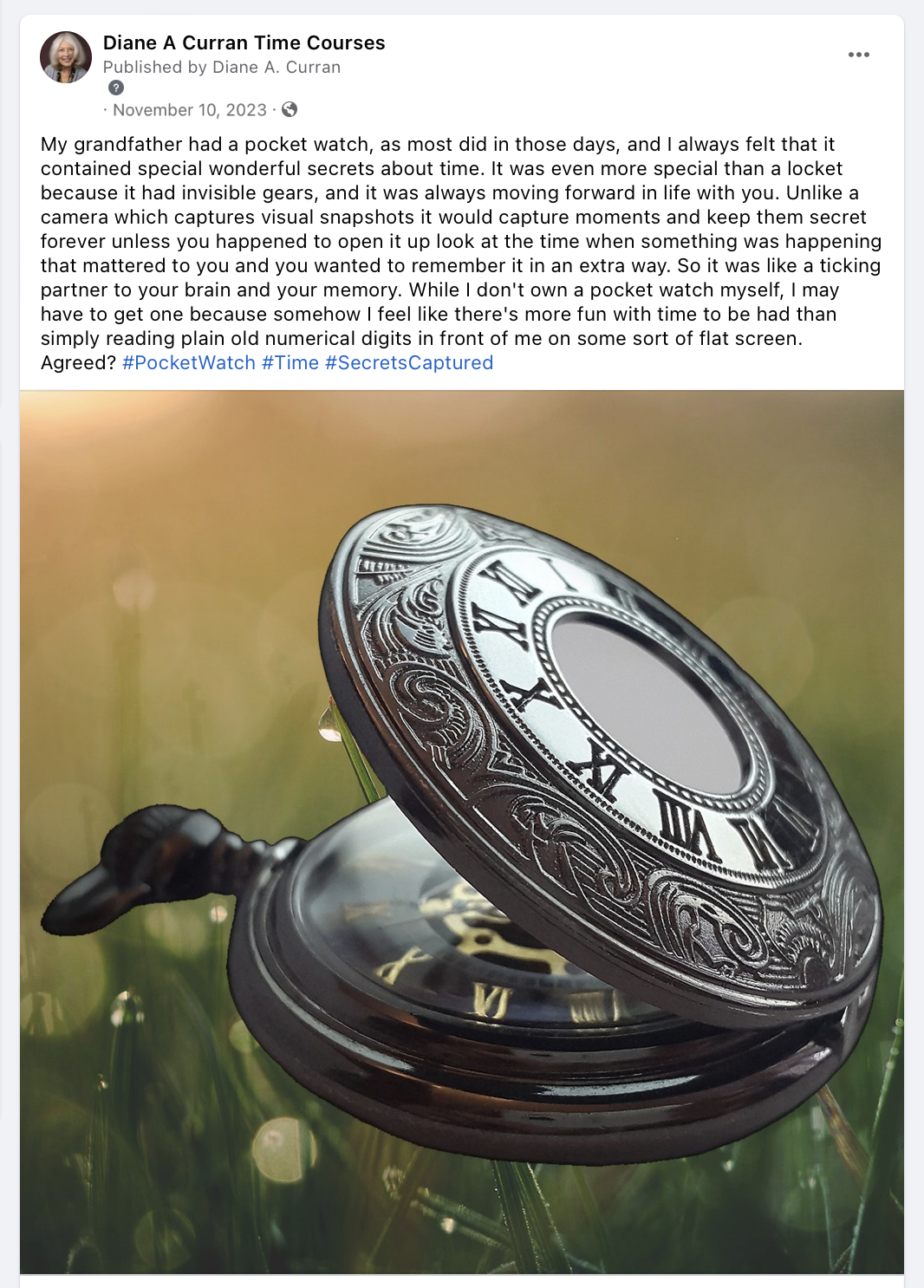Time Tidbits
Does Time Move Too Fast or Too Slow?
Enjoy this inlet where we publish occasional discoveries and news about Time. There’s always more to notice as life rushes us along …
What’s the fuss about the history of Time?
That’s a good question, but I wanted to know something different:
I was in a hurry to know why we have 24 hours in a day.
To fnd out, I had to gallop on my computer all the way to Australia from the City of Angels. Luckily, it only took about 0.42 seconds since I have 32GB of RAM in my trusty Apple-orchard-bred steed and my browser was in a great mood. Whew!
Now I’ve got 6,610,000,000 answers, but I only need one. The winning facts were volunteered by the Australian Broadcasting Corporation, and seem to match what I keep seeing across my ever-expanding investigations into time. The vintage-2011 article is terrific, from an interview of Dr. Nick Lomb of the Sydney Observatory by Kylie Andrews for ABC Science, and here’s my favorite quote:
“Our 24-hour day comes from the ancient Egyptians who divided day-time into 10 hours they measured with devices such as shadow clocks, and added a twilight hour at the beginning and another one at the end of the day-time, says Lomb. "Night-time was divided in 12 hours, based on the observations of stars.”
Ancient Egyptians get all sorts of credit for noticing what our planet kept doing naturally: having seasons, with darkness and light you could set your sundial by. The Egyptians just lumped darkness together and didn’t spend much time divvying it up into distinct hours on sundials, because they couldn’t see the sun’s motion in the dark! D-oh! Sleeping and nighttime hijinks are what people did at night. Daytime got all the attention from sundials, and farming, trading, exploring, wars, sports, festivals and other busy human pursuits worked better with daylight. They all became more precisely measured as sundials became clocks, eventually suited to even new-fangled tasks they help us do now in this modern age.
Ancient Babylonians, Chinese, Mayans, Aboriginals, Arabs and other early cultures gravitated to setting up time systems using units of 60, which survive today as hours, minutes, seconds, etc. Even circles were given 360 degrees, and clocks got round. They spent forever in circular form displaying “analog” time. Once we dreamed up “digital” time, we got all those little boxes with just barebones numbers. No. More. Circles. Awww…
But many clocks are still beautiful, and not “Bot-like” at all. I suspect they’ll be with us into the foreseeable future, just as our system of counting time has endured since humans first noticed the persistent dawns of time!
You are the designated inheritor of the ancients’ passion for TIME.
I invite you to enjoy your relationship with Time!
We love pondering Time’s good, bad and ugly, plus the Wow! that comes from opening up to the creative energy that enjoying Time adds to our lives. And there’s always something new, so join us for the Scoop!
Planets on Parade!
We know eclipses grab everyone’s attention and keep us on our toes for energy shifts. Such a fabulous way to experience Time!
So can our solar system’s planets… and this January and February 2025 present a doozy of a celestial showing.
Here’s what’s up as January proceeds… and for you, the darker the sky, the brighter they’ll glow. But even in the city, their glow may catch your attention best on clear nights…
Excerpted and condensed from NASA’s public website summary for January. But stay tuned for more of the same in late February, too. Best time yo see these arrays is right after sunset. A small telescope will mske it easiest of all to see what’s showing up in these rare arrangements in our skies…
January 3 – Quadrantid meteor shower peaked: This is a moderate shower, usually delivering 20 to 30 meteors per hour under clear, dark skies at its peak. No interference from the Moon makes this year’s peak a better bet for meteor watching.
anuary 13 – Moon Occults Mars: For skywatchers in the continental U.S. and Eastern Canada, the Moon appeared to pass in front of Mars this evening
January 17-18 – Venus and Saturn conjunction: Over a couple of weeks, the two planets are within just a couple of finger widths’ distance apart in the sky..
All month – Four planets Visible: In the first couple of hours after dark, you’ll find Venus and Saturn in the southwest, Jupiter high overhead, and Mars in the east. (Uranus and Neptune are there too, but a telescope is needed to see them.)
All month – Mars at Opposition: The Red Planet is directly opposite the Sun from Earth and shines brightly all night.






